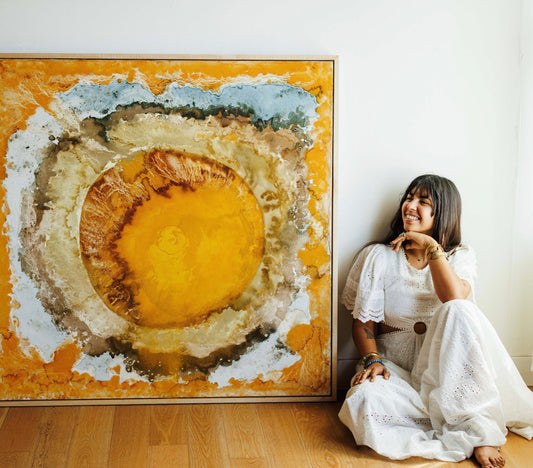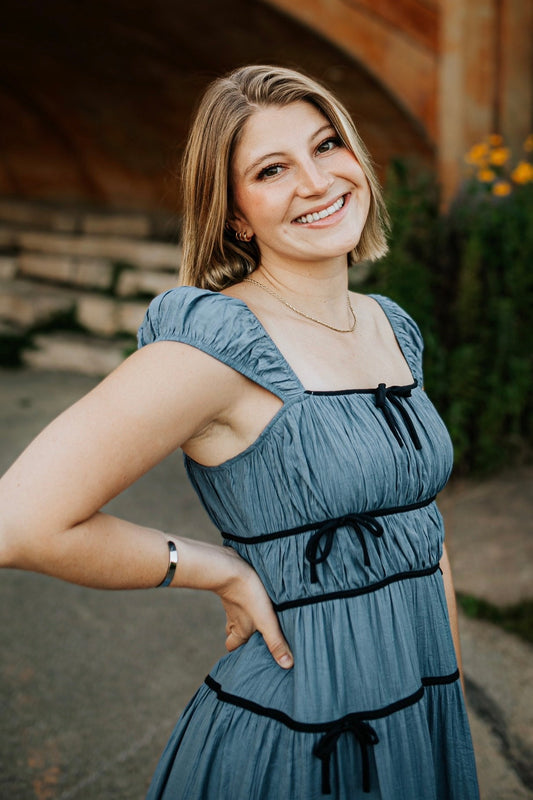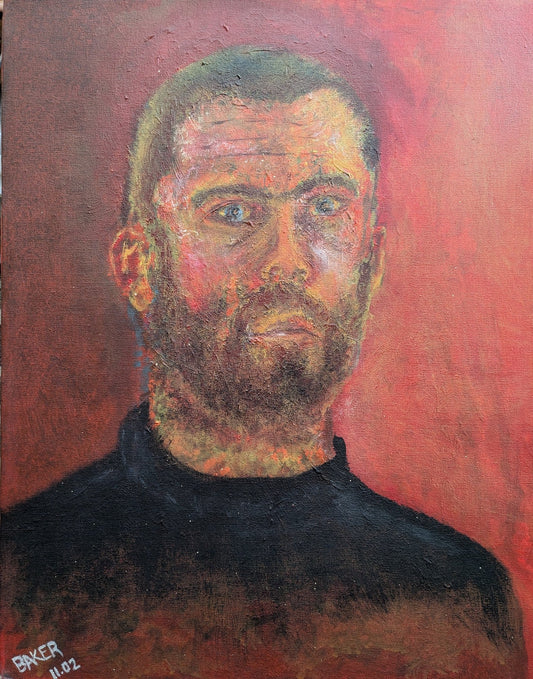James Cook, a London-based artist, has found a new purpose for typewriters. For the past nine years, he has used typewriters to create over 300 portraits and architectural drawings of iconic buildings and monuments. Typewriters had previously served as an effective and fast writing utensil for reporters and writers. Typewriters were in development as early as 1575, but it wasn’t until 1865 when Reverend Rasmus Malling-Hansen invented the Hansen Writing Ball, “the first commercially produced typewriter.” However, in the 2000s, typewriters were supplanted by computers, which have continued to immensely enhance the efficiency of typing. James, however, has taken a classical tool and reconceptualized it as contemporary art.

On July 14th, 2023, I had the pleasure of speaking to James through an international phone call. Being a fan of typewriters myself, I wanted to speak to him after seeing his appearance on the Today show. The first question I asked him during our 30-minute interview was when he purchased his first typewriter. James shared that he purchased a 1953 Oliver Correa typewriter in 2014. He acknowledged how back then, he was a college student studying architecture in London at the time. He began typewriting and selling art on the side, given the high cost of living in London. . James mentioned his biggest inspiration for typewriting was Paul Smith, an American typewriter artist, “who could not use pens or brushes because he suffered from cerebral palsy.” Despite his disability, Smith’s career spanned over eight decades before dying in 2007.
James’s drawings solely focus on portraits and architecture in London. Yet what makes his art authentic is that, upon closer inspection, intricate combinations of letters, numbers, and symbols emerge from the typewriter. Interestingly, he often coordinates the words and symbols to match the subject of the picture. James noted , “I try to [coordinate] at least, but it can be difficult. It will vary with numbers and words.” He further commented how he drives to different locations in London to type. He frequents bars and pubs to view his chosen architecture through a window. For James, London is an emotionally important place for him, because it inspires nostalgia of his college days. In addition, he incorporates historical and current events within his artwork. For example, James mentioned the resignation of the United Kingdom’s Prime Minister in September of last year. He inoculated the event into his drawing as a reminder and connection to this topical affair.
James described his daily routine:
“I get up at 9am and drive to London. I get there at 10:30 in the morning and work until 6:30pm to 7pm at night. I go outside and do a drawing on location. I love getting out of the studio and doing work outdoors. It’s much more enjoyable. It all depends. I try to post online on a regular basis on Instagram. I am a bit of a night owl. I tend to work much faster at night. I know what I am doing on a week-to-week basis.”


James is constantly producing new work. He exclaimed how within a month’s time frame, he can type three to four drawings. Also, he can tell if a drawing will work out or not within the first day. However, one of his challenges he faces is when a key gets stuck in his typewriter. “It happens all the time when keys get stuck,” James pointed out. “You find a way around it. I have become a collector of typewriters that people have given me. I only use three machines at the same time. It’s something as simple as that one key doesn’t work. I don’t use it after that drawing. It happens very rarely where I restart a drawing.” He shared that he restarts portraits more frequently than he restarts architectural work. Portraits are more time-consuming and detailed than building designs. While architectural works call for more simple, impersonal linework, portraiture is more difficult, because according to James, “you’re capturing someone’s likeness.”

Two of James’s most famous works are a portrait of actor Tom Hanks and architectural drawings of the London skyline. Both of those drawings have compelling stories behind them. Regarding Hanks’s portrait, James said, “I start typing in the eyes. Someone is drawn to the eyes. The last thing to complete is the body, such as the shoulders.” I asked James how long the portrait of Hanks took and he said, “I did that drawing back in 2016 or 2017. It was a long time ago and not reported at the time. I was doing it as a hobby and posting on Instagram. There wasn’t a whole lot of popularity then, unlike now.” Fortunately for James, in November 2020, when he was on the Kelly Clarkson Show, word got out about his portrait of Hanks. Miraculously, after a year, Hanks had contacted James, and he returned and signed the portrait James produced. However, unbeknownst to James, he and Hanks had a similar interest. They both collect typewriters! According to BBC News, Hanks “owns more than 120 typewriters.” When James shared this story with me, I was in awe at such a coincidence!
James’s London skyline drawing is, to date, the longest he has completed. The drawing was privately commissioned for a couple who attended one of James’s typewriter classes. The couple wanted a picture two meters long of the London skyline to capture their view of the city from their flat. James mentioned that drawing took a month or two to complete, from typing to framing. “
“The hardest part was finding someone to frame the work once completed,” James chuckled. “It wouldn’t fit in my car.”

James Cook’s contemporary approach of creating art through a typewriter is uniquely fascinating. Who would’ve thought of using a typewriter to create stunning portraits and to depict the architecture of buildings? James uses his typewriters to tell a story through pictures full of words. James displays his completed pieces alongside the typewriter he used to create them. Despite his innovative style, what makes his art special is his journey to become the artist he is today. From humble beginnings as an unknown college student who worked with typewriters on the side, James has become a critically acclaimed artist through the crucible of dedication and hard work. His story is living proof that staying true to your passions can elevate you to unprecedented heights.
©ArtRKL™️ LLC 2021-2023. All rights reserved. This material may not be published, broadcast, rewritten or redistributed. ArtRKL™️ and its underscore design indicate trademarks of ArtRKL™️ LLC and its subsidiaries.





